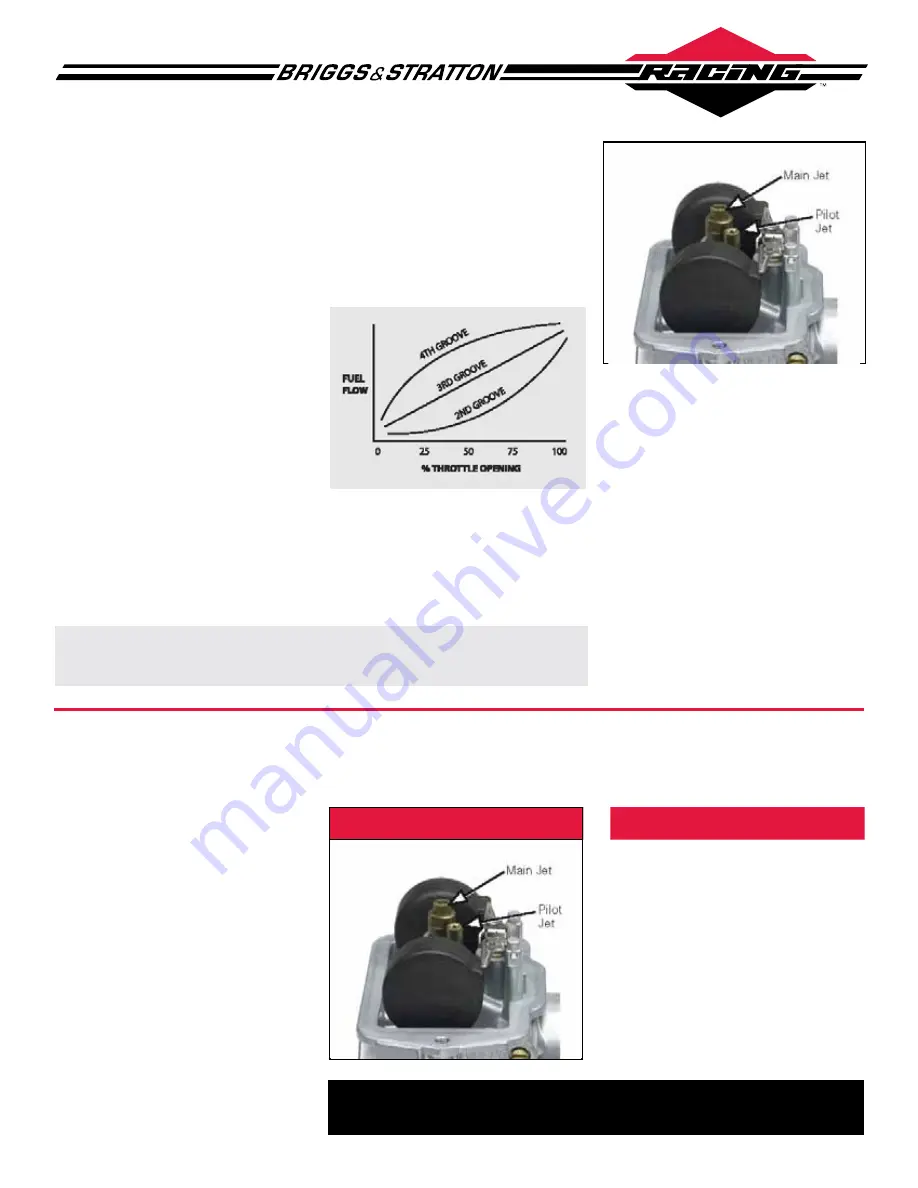
3
Midrange/Part Throttle
Part involved:
• Jet Needle
• Main Nozzle (Needle Jet)
• Throttle Slide Valve
The Jet Needle primarily controls fuel
flow between 10% and 75% throttle
opening. The Jet Needle is the long
narrow needle in the center of the
throttle slide valve. The needle can
be seen when the throttle is opened.
It is held in place in the center of the
throttle slide by a V-shaped clip.
The Jet Needle has five notches and a
C-clip which determines the position of
the needle in the slide based on which
notch the clip is placed in. By varying
the height of the needle in relation to
throttle opening, the amount of taper
of the needle in the main nozzle will
change the fuel mixture.
To richen the part throttle operation,
move the clip to the next lower notch.
This will hold the needle farther out of
the main nozzle and allow more fuel
into the air stream. To lean part throttle
operation move the clip to the next
higher position. The notch at the top
of the needle would be considered the
first position (leanest). Needle taper
reference letters are stamped on the
needle for identification.
Location of C-clip on jet needle determines mid-
range fuel mixture.
RAISING THE NEEDLE IN THE SLIDE = RICHER MIXTURE
LOWERING THE NEEDLE IN THE SLIDE = LEANER MIXTURE
High Speed/Full Throttle
Parts Involved:
• Main Jet
The Main Jet controls the fuel flow at
throttle positions of one-half to full
throttle. The Main Jet is located inside
the float bowl and is screwed into the
bottom of the Emulsion Tube in the
center of the carburetor body. The
jet size or diameter in millimeters is
stamped on the jet. A larger diameter
jet allows more fuel flow and a richer
mixture.
Altitude and weather conditions can
affect the engine operation enough to
require changing the size of the Main
Jet. High air temperature, humidity,
or altitude could require a smaller
Main Jet. Low temperature, humidity,
or altitude would require a larger
diameter Main Jet.
Animal, 206, and M-series
RUNNING THE ENGINE WITH AN IMPROPER MAIN JET COULD RESULT IN A LOSS
OF POWER, HIGH ENGINE TEMPERATURES, OR ENGINE DAMAGE.


























